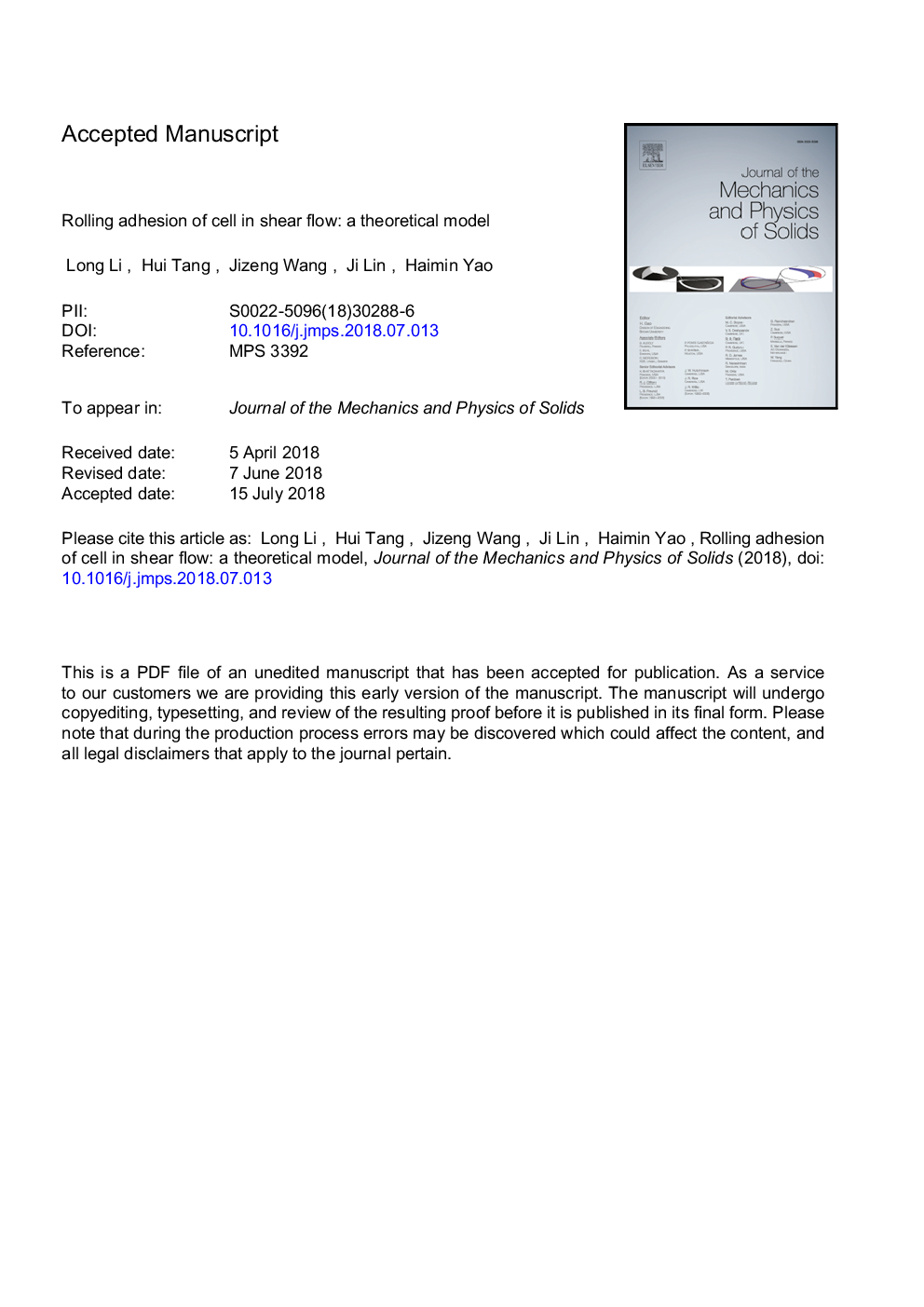| Article ID | Journal | Published Year | Pages | File Type |
|---|---|---|---|---|
| 7177373 | Journal of the Mechanics and Physics of Solids | 2018 | 28 Pages |
Abstract
Adhesion between cells and blood vessel wall plays an essential role in many biological processes such as immune response and cancer metastasis. Unlike the other adhesion processes taking place in relatively quiescent milieu, cells in blood vessel tend to be subjected to hydrodynamic impact from the blood flow. Understanding the kinetic response of cells to the blood flow helps in shedding light on the related biological processes. In this paper, a theoretical model is established to depict the kinetic behavior of a cell in shear flow by equating cell adhesion, which is mediated by ligand-receptor reactions, as speed-dependent inter-surface interaction in combination with the kinetics of a rolling object. Our results indicate that the steady state of the cell depends on the shear rate of the flow. In a flow with relatively low shear rate, the cell would finally rest on the vessel wall. If the shear rate is sufficiently high, the cell would be rolling at a steady speed on the wall. In a flow with intermediate shear rate, the cell would either rest or roll at a steady speed on the vessel, depending on its initial status. These predictions are verified by Monte Carlo simulations and are also consistent with the 'bistability' phenomenon of the rolling cell as reported in literature. Our findings not only shed light on the mechanics of adhesive rolling of cells on vessel wall but also have potential applications in the design of biomedical systems such as microscopic carriers for drug delivery in blood circulation.
Related Topics
Physical Sciences and Engineering
Engineering
Mechanical Engineering
Authors
Long Li, Hui Tang, Jizeng Wang, Ji Lin, Haimin Yao,
